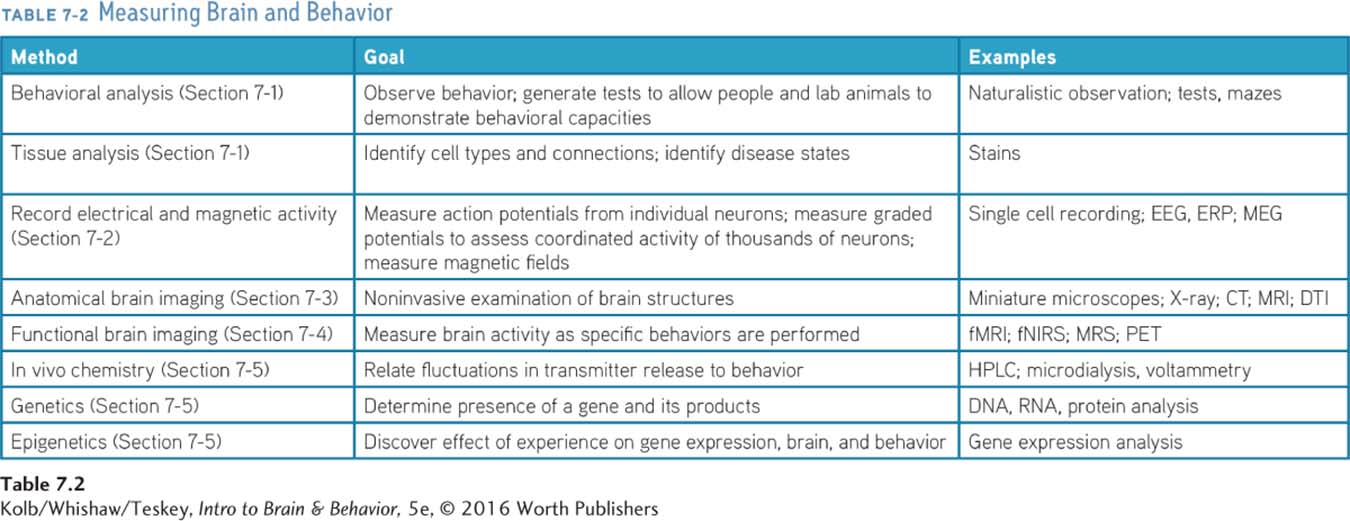7-6 Comparing Neuroscience Research Methods
We have considered a wide range of research methods for manipulating and measuring brain–


Some researchers focus on morphology (structure) in postmortem tissue. This approach allows detailed analysis of both macro and micro structure, depending on the method chosen. Identifying brain pathology, as in Parkinson disease, can lead to insights about the causes and nature of a disorder.
Other investigators focus more on the ways neurons generate electrical activity in relation to behavior or on functional changes in brain activity during specific types of cognitive processing. Both approaches are legitimate: the goal is gaining an understanding of brain–
But investigators must consider practical issues, too. Temporal resolution (how quickly the measurement or image is obtained); spatial resolution (how accurate localization is in the brain); and the degree of invasiveness all are pertinent. It is impractical to consider MRI-
Similarly, studies of brain-
Of course, cost is an ever-
7-6 REVIEW
Comparing Neuroscience Research Methods
Before you continue, check your understanding.
Question 1
Neuroscience measurements and imaging vary along the dimensions of ________, ________, and ________.
Question 2
Relative to the expense of fMRI and PET imaging, noninvasively perturbing the brain using methods such as ________ or administering neuropsychological testing is ________.
Question 3
The main consideration for choosing a research method is the question being asked. What is the fundamental goal of neuroscience research?
Answers appear in the Self Test section of the book.